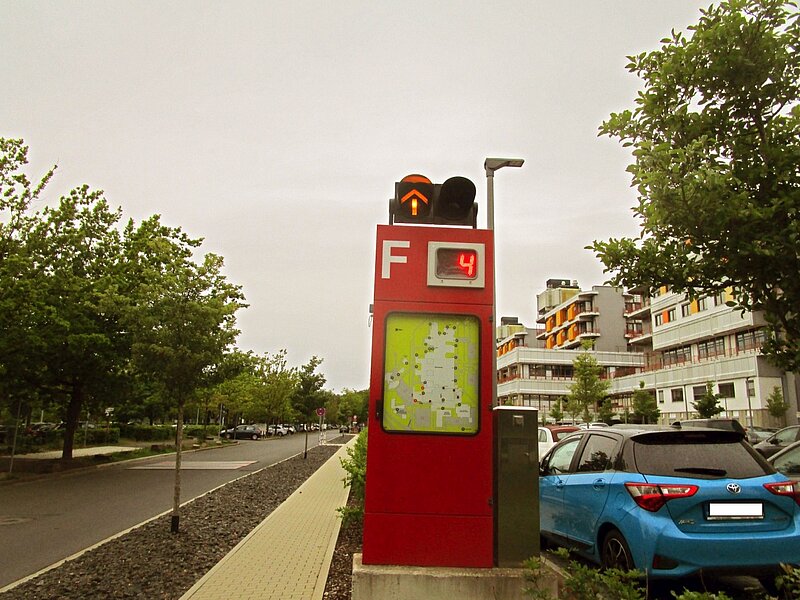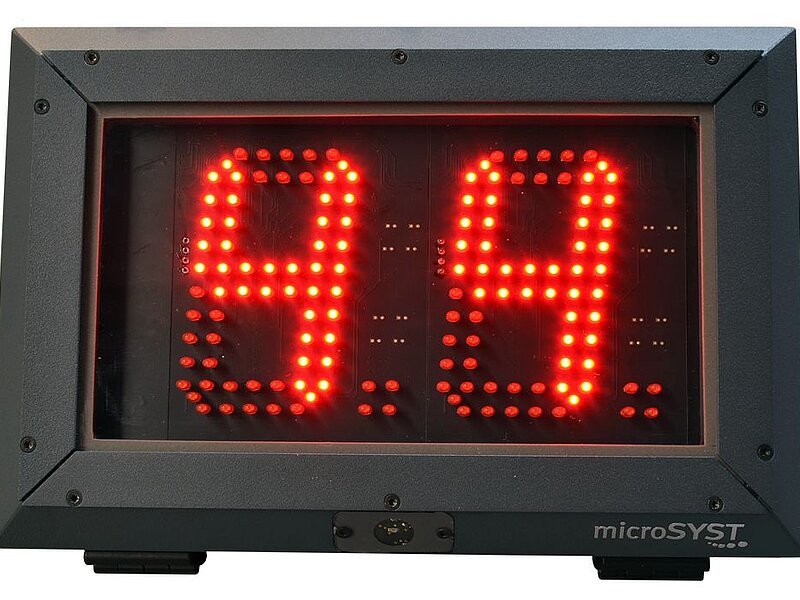- Visualisation just in time
- Optimal readability in all weather conditions
- Reliable, maintenance-free system
Fire brigade guidance display provides rapid orientation for emergency teams
Advantages at a glance
Quick orientation in an emergency: to ensure that the emergency teams can reach the correct point of action without detours in the event of a fire brigade operation at Gießen University Hospital, a bright LED display at the access road to the hospital grounds indicates this point. 24/7, the display in combination with a display board and an arrow light makes the rescuers' work easier - and saves the seconds that are so important in an emergency. A "simple number" and yet immensely helpful. The display is used to guide arriving fire engines to the so-called fire brigade attack point. The hospital has 27 consecutively numbered attack points. The emergency teams are informed when they approach and can directly take the specification for each individual point of attack from their data.
Automatic brightness and maintenance-free technology
With the bright and high-contrast design of the LED display, system electronics supplier microSYST takes into account the requirements for outdoor use, even in fog or poor visibility due to rain. "A display that is relevant to emergencies must not allow itself any weaknesses here - our systems are virtually predestined for this," explains Harald Kilian, microSYST owner and managing director. The same applies to the durable design of the technical and mechanical components: Fanless and maintenance-free technology, selected diodes and circuits as well as a robust aluminium housing defy wind and weather in continuous use. Thanks to the high radiation angle, the display is very easy to read even when viewed from the side. The brightness of the LEDs adjusts automatically so that emergency personnel can always read the display perfectly - without glare at night and with excellent visibility during the day, even in direct sunlight. A temperature-controlled housing heater extends the temperature range in which the display can be used to very low temperatures (down to -25 degrees Celsius). Due to the modularity in terms of construction and connection, the display could be easily integrated into the already existing display traffic light system with stele.
Safety factor fast processing
The configuration software included in the scope of delivery enables Hagen Langer and his team from the Technology Division of Universitätsklinikum Gießen und Marburg GmbH to adjust various settings themselves and intuitively. "We are absolutely satisfied with the implemented solution," says Langer. "microSYST enabled a fast and easy process from the initial enquiry to commissioning, so that long downtimes due to the old and defective display were avoided. For the benefit of fire protection and the safety of our staff and patients."

